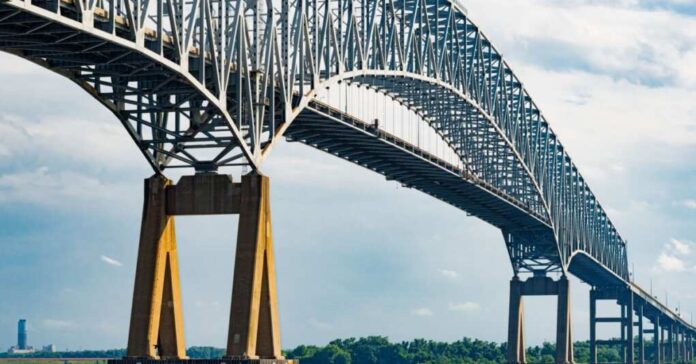
In the early hours of March 26, tragedy struck when the massive Singaporean cargo ship, the Dali, collided with Baltimore’s vital Francis Scott Key Bridge, causing its collapse.
Among the victims were the six construction workers on the bridge at the time of the incident, hailing from Mexico, Guatemala, El Salvador, and Honduras. While the bodies of Alejandro Hernandez Fuentes from Mexico and Dorlian Ronial Castillo Cabrera from Guatemala have been recovered, the fate of the other four workers remains uncertain, as search efforts have been temporarily halted due to safety concerns.
In addition, several cars were on the bridge at the time, with most of those drivers and passengers unaccounted for. It’s unclear how many vehicles were lost, but a body was recovered from a sunken pick-up truck.
The Dali container ship, with 21 crew members and two pilots onboard, was found to be carrying hazardous materials, including corrosives, flammables, and lithium-ion batteries. Now leaking, it raises additional concerns about the potential environmental impact of the collision. In the aftermath of the tragedy, the National Transportation Safety Board (NTSB) took charge of the investigation, which is expected to last between 12 and 24 months.
As the community grapples with the aftermath of the disaster, efforts are underway to rebuild the bridge, a daunting task that carries significant implications for Baltimore’s economy and global trade.
Above all, one question stands: Who is responsible for rebuilding the bridge?
According to a port worker, the Dali encountered a severe electrical problem while docked in Baltimore just days before the tragic incident. Julie Mitchell, co-administrator of Container Royalty, a cargo tracking company, revealed that the ship had been anchored at the port for at least 48 hours before the deadly crash. During this time, the vessel experienced severe power outages, including a total power failure and loss of engine power. The devastating collision occurred shortly after these electrical issues were reported.
Video footage captured moments when the ship’s lights went dark for 11 seconds, followed by a second outage of at least seven seconds. An unclassified memo from the US Cybersecurity and Infrastructure Security Agency (CISA) confirmed the ship suffered at least one loss-of-propulsion (LoP) incident just before the collision.
This indicates that Dali should never have left the port. The cargo line should foot the estimated $2 billion in rebuild costs.
However, President Joe Biden has indicated that the federal government will pay for everything, saying, “It is my intention that the federal government will pay for the entire cost of reconstructing that bridge, and I expect Congress to support my effort.”
However, the government is not responsible for rebuilding the bridge; the damage is already covered.
The Dali operates under Maersk’s charter, while Synergy Group oversees its operations. Although ownership and management of the vessel are clear, the responsibility for damages and cargo costs rests with the companies that had cargo aboard the Dali. Guided by the maritime principle of “general average,” all companies with cargo aboard, 330 containers in total, are obligated to share damages proportionally based on the number of containers they had on the ship, ensuring fair risk distribution among stakeholders.
The Dali is insured by Britannia P&I Club, a member of the International Group of P&I Clubs, which maintains substantial reinsurance coverage. Although Britannia bears the initial $10 million in damages, the mutual insurance group and Lloyd’s of London, a UK-based reinsurance market, collectively share any remaining costs.
While the insurance industry is expected to absorb much of the financial burden, insurers may also be accountable for bridge damage, port disruptions, and loss of life resulting from the incident, according to industry experts. The bridge’s collapse is anticipated to prompt one of the largest claims ever in the marine insurance market.
Why would the Biden administration volunteer $2 billion to rebuild the bridge? It’s all about scoring political points. When asked if the company that chartered the ship that caused the collapse should pay for the bridge’s reconstruction, Biden said, “We’re not going to wait for that to happen.”
The original bridge, built in the 1970s for about $60 million, could be rebuilt at a much higher cost, potentially ten times more. Baltimore, a major port in the US, oversees over a million shipping containers annually. The bridge’s collapse has disrupted the supply chain, making it crucial to rebuild it quickly to minimize disruptions.
Democrats see this as Biden’s chance to emphasize the importance of his infrastructure agenda and show effective leadership during crises. By quickly pledging funds for the rebuild, the President also has a chance to “demonstrate his administration’s ability to address the country’s infrastructure challenges,” especially as the November election approaches.
At, of course, an unnecessary and extravagant taxpayer expense.











